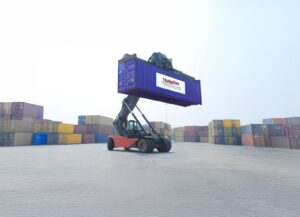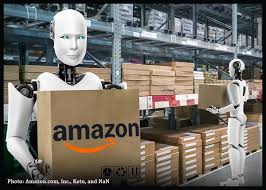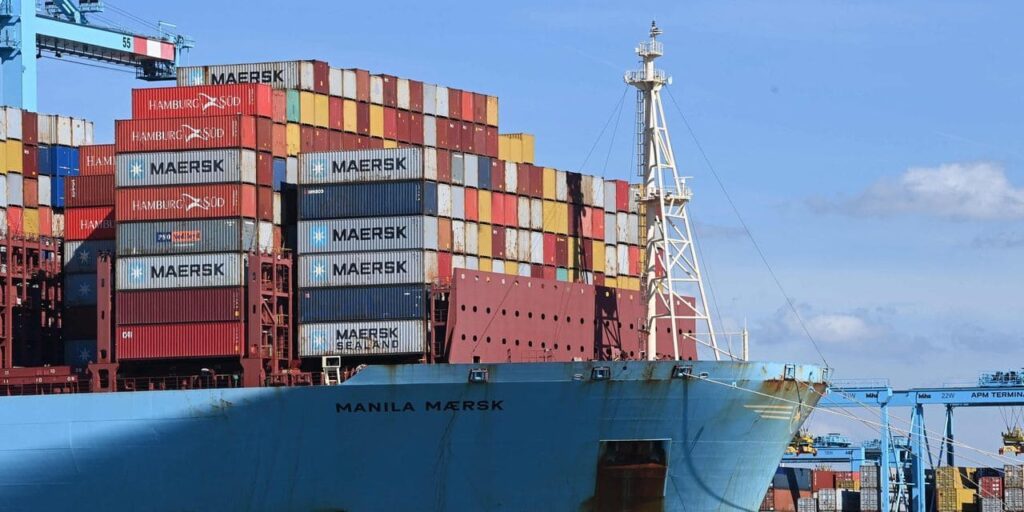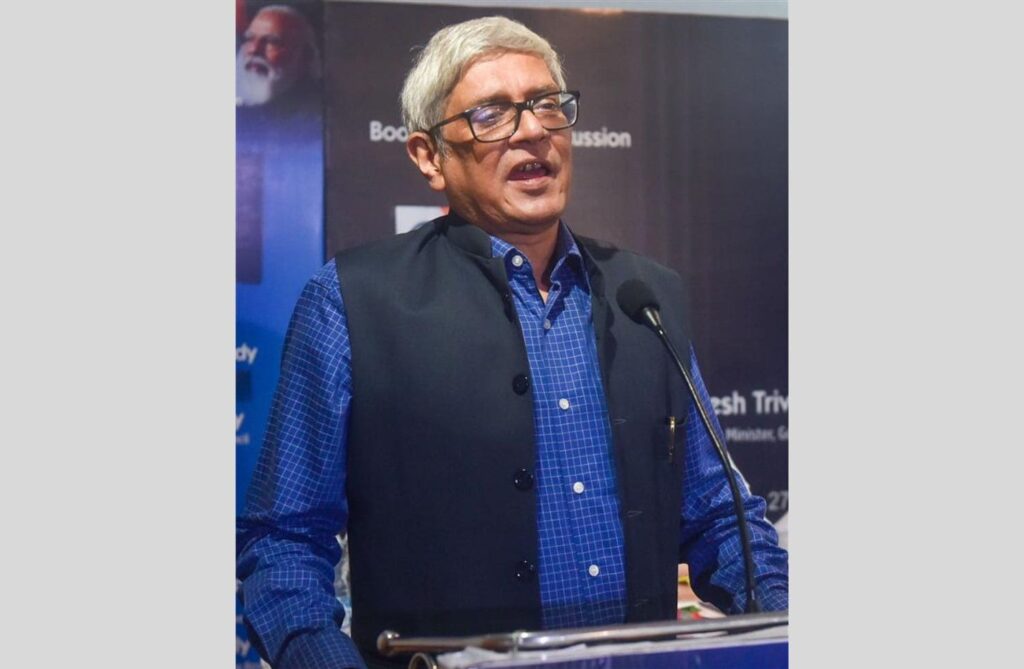Whether it be the National Logistics Policy or the PM Gati Shakti Scheme, whether it be the setting up of DFCs or welcoming technological integrations, the government has been constantly working towards the development of the transportation, logistics, and freight sectors. And so, it would be interesting to see how the allocations are made in the upcoming budget for the years 2023–24.
Some of the industry veterans share their valuable insights into the developments in the sector and their expectations from the upcoming union budget for 2023–24.
——————————————————————————————————

The Indian rupee is one of the best-performing currencies in the world. While it depreciated against the US dollar, the decline was not as steep as most of the other global currencies. However, this is affecting export competitiveness. And hence, this sector requires a little more support in the days to come.
When global demand is declining, aggressive marketing is the key. Though such assistance is available in India, it is a drop in the ocean compared to the assistance provided under the Department of Commerce’s Market Development Assistance (MDA) Scheme, which has a total allocation of less than Rs 200 crore for promoting exports to the US worth $ 460-470 billion. Therefore, for aggressive marketing, there is a need to create an Export Development Fund with a corpus of a minimum of 0.5 per cent of the preceding year’s exports, and that’s our first expectation from the budget.
Secondly, the government should provide a 200 per cent tax deduction on the expenditures made by the exporters for overseas marketing, which will encourage and help the showcasing of Indian products overseas.
In addition, while we are disinvesting the Shipping Corporation of India, we should encourage the private sector, through tax and fiscal incentives, to come forward and set up a global Indian shipping line to exploit the ready market available to them. Also, there is an urgent need to restore the interest equalisation benefit of 5 per cent to manufacturer MSMEs and 3 per cent to all 410 tariff lines as existed prior to October 2021, as the cost of credit has crossed the pre-covid level and is adversely impacting exporters. As a result, the budget should take this into account and make the necessary allocations to boost it.
Another major challenge faced by the country in the present times is employment generation. If we have to reap demographic dividends, we have to provide jobs to millions who are seeking jobs on a month-to-month basis. And so, the government should provide financial support to units that provide additional employment in the export sector, thus helping the workers move from informal employment to formal employment.
~ Dr. A Sakthivel, President, FIEO
——————————————————————————————————

In line with NLP’s vision, which is to improve logistics efficiency, we anticipate that the government will make a specific budgetary allocation for:
- creating new logistics infrastructure
- redevelopment of the existing infrastructure for both air and sea ports.
Moreover, as the aim is to spur investments across the logistics sector, it should be taken into account that a sizeable number of logistics players fall under the MSME category. The government should consider introducing more schemes to enable MSMEs to get access to funding options. Similar to the ship-leasing and aircraft-leasing models presently available at IFSCA Gift City, the government should also recognise LSPs as a category and allocate a budget for funding expansion in the logistics sector.
Apart from this, the government should align the exponential infrastructural growth presently taking place with the specific needs of our supply chain and the LSPs. And so, another expectation from the budget is that it should give more impetus and introduce new incentives to encourage container ownership in India.
Our expectations with customs departments are to automate or digitalise the processes for faster clearance of cargo, like e-KYC verification norms, online agreed messages between custodian and customs with system integration, digital processing of transshipment cargo, etc., aimed at reducing the logistics cost. Lastly, it should focus on one platform, one procedure for all the processes across the country to ease operations and boost efficiency.
~ Anjali Bhide, Vice President, AMTOI
——————————————————————————————————

The NLP, under PM Gati Shakti’s National Master Plan, provides a comprehensive agenda for the development of the entire logistics ecosystem in the country. In line with the same, a simplification of the procedure and rationalisation of the cargo handling rates for both international and domestic air cargo handling activities are expected from the government. Moreover, the government of India must ensure that these rates are comparable to those at other airports around the world so that our export competitiveness is not impacted by high air cargo handling charges.
Not only this, but while India’s domestic aviation market is one of the fastest growing in the world, air cargo operations have been relatively sluggish. Against this backdrop, the government should work on ways to bolster the air cargo sector. Alongside this, it should aggressively push for the establishment of off-site air freight stations.
Apart from this, the Department for Promotion of Industry and internal trade (DPIIT) under the Ministry of Commerce has recently launched the National Single Window System (NSWS), an online portal that will facilitate clearances at the centre and state levels on a single platform. This aims to eliminate the need for investors to visit multiple IT platforms and offices to gather information and obtain clearances from different stakeholders. Similarly, Customs may also consider a single-window platform having a unified interface with all the regulatory and facilitating agencies involved in the processing and clearance of international cargo. This online platform will allow users to request approvals, authorisations, and other certifications needed for the clearance of their international cargo, thereby resulting in fewer delays and greater transparency.
~ Vipin Vohra, Chairman – Continental Carriers Group
——————————————————————————————————

My expectations from the union budget of 2023-24 is that resources should be channelised towards the development of the Customs Department and CBIC, such that, they can: –
- Provide for duel screen sharing facility with assessing officers to see Bill of entry and documents uploaded in e-sanchit at the same time for faster assessment
- Fasten up the disbursal of incentives and IGST refund cases by auto integrating BRC data in the Customs system
- Save time, effort, and money by registering goods (export) with Customs Brokers to save time and ensure faster clearances of export consignments. Central arrival data should also be integrated between Custodian and Customs for implementing the same
- Quickly assess and ensure that the ‘out of charge of goods’ is completed within twelve hours after filing and duty payment
~ Puneet Jain, President Delhi Customs Brokers Association, DCBA
——————————————————————————————————

After the implementation of the new National Logistics Policy, the expectation from the upcoming Budget 2023-24 is to primarily invest towards reducing the logistics cost in India by five to eight per cent of GDP over the next five years. Secondly, the focus should be on improving India’s ranking in the Logistics Performance Index and developing a unified policy environment with an integrated institutional mechanism that will help India become a multimodal logistics hub. In addition to this, the budget should also focus on investing in the technological development and digitisation of the processes, especially those pertaining to customs, for smoother and faster clearance of cargo.
Aside from all of this, the government should emphasise the importance of completing existing ongoing projects on time so that the others in the pipeline can begin on time.
~ Dileepa BM, CEO – Bonded Trucking, Shreeji Translogistics
—————————————————————————————————-

Given the fact that the NLP has been announced and has gained significant traction, Budget 2023 will ideally have significant allocations to achieve some of the goals set out in the NLP. Another issue faced each year is the deteriorating quality of roads, which is primarily attributed to improper and non-holistic planning. And so, this year’s budget should also focus on investing in qualitative development alongside quantitative growth. Not only that, but now is the time for digitisation, and the government is working hard to achieve it. As a result, another area where allocations can be expected is technological integration and the implementation of initiatives that drive digitisation across the country, such as the Faceless Assessment Scheme implemented in Customs.
~ K. Vaitheeswaran, Advocate & Tax Consultant
——————————————————————————————————

Government initiatives in 2022 have been focused on reducing the dependency on road transport. Be it through infrastructural developments or policy-making, the government has constantly worked towards the diversification of freight modes. As a result, the Union budget for 2023-24 should also be centred on the same vision. Ideally, it should focus on the development of routes for the growth of other freight modes, supporting infrastructure, and maximising reach to industrial towns and other important hubs.
Besides, the logistics sector today, isn’t well organised and it is high time that proper and directional development takes place, which is only possible if the capital is well invested in projects that help give this sector a defined structure.
~ Hemant Singh, Regional Director – North & East India, Rhenus Logistics
——————————————————————————————————

The logistics and supply chain industries have long been challenged by the sector’s highly fragmented nature, multiple regulatory bodies, manual approval processes, poor shipment visibility, et al. However, the national logistics policy has been a significant step forward in mobilising the power of digital transformation, particularly platformisation, to break down logistics silos.
The upcoming budget, thus, should most likely move it forward by strengthening its foundation for seamless implementation and reducing logistics costs. Besides, there is an urgent need to address climate change concerns through regulations, it would be excellent if the government allocated funds to develop policies that ensure sustainable logistics practices through digitisation and green delivery modes that will gradually help in reducing the carbon footprint significantly.
In addition, the thrust to expedite the development of multi-modal logistics parks and to close the digital skill gap in the logistics sector are two other important aspects that the budget is expected to focus on.
~ Dhruv Agrawal – COO & Co-founder, Shipsy
——————————————————————————————————–

The launch of the National Logistics Policy (NLP) is a move in the right direction to build an integrated and resilient logistics ecosystem that will enhance the overall efficiency and competency of the industry. The NLP envisions establishing a unified digital logistics system to improve transparency and inter-ministerial and inter-agency collaboration. As the NLP lays down a comprehensive policy framework for the effective implementation of PM GatiShakti’s National Master Plan (NMP) for multimodal connectivity, the upcoming budget is expected to have a bigger capital expenditure provision for developing multimodal infrastructure as well as seven growth engines such as roads, railways, airports, ports, mass transport, waterways, and logistics Infrastructure. The government’s CapEx outlay will crowd in private investment in the infrastructure space. Make in India and other production-linked incentives (PLI) schemes have laid the groundwork for a $5 trillion economy, with the goal of increasing manufacturing. A more intensive public-private partnership and a vision-driven public-private partnership will lead to a more broad-based transport, warehousing, and logistics infrastructure development in the country.
~ Deven Pabaru, Chief Business Officer, Stellar Value Chain Solutions
——————————————————————————————————–

Logistics is one of the most competitive industries in the world, and hence, when discussing budget allocation, we must recognise how critical it is to ensure that our investments are directed toward areas that truly matter.
In 2023, we should anticipate investments in activities that will make this sector more organised. For example, the PM Gati Shakti Scheme focuses on seamless multimodal connectivity to enable smooth operations. We can also anticipate the implementation of the National Logistics Policy, which will reduce the cost of GDP from 14% to a single digit. As we all know, logistics is also one of the world’s largest carbon-emitting sectors, and so there has been discussion about investing in making this sector carbon-neutral by using less carbon-emitting fuels, electric scooters, and other similar technologies.
On top of that, we can expect Rs two lakh crore in investments in port infrastructure to alleviate logistics inefficiencies.
Overall, we can predict that 2023 will be the year when the logistics industry reaches its full potential.
~ Zaiba Sarang, Co-founder, iThink Logistics










